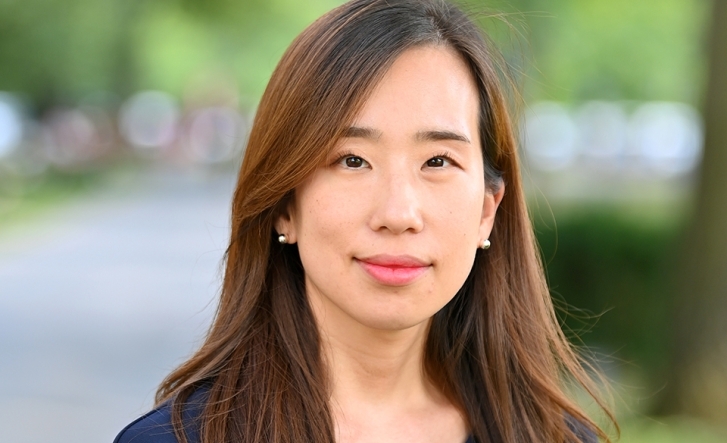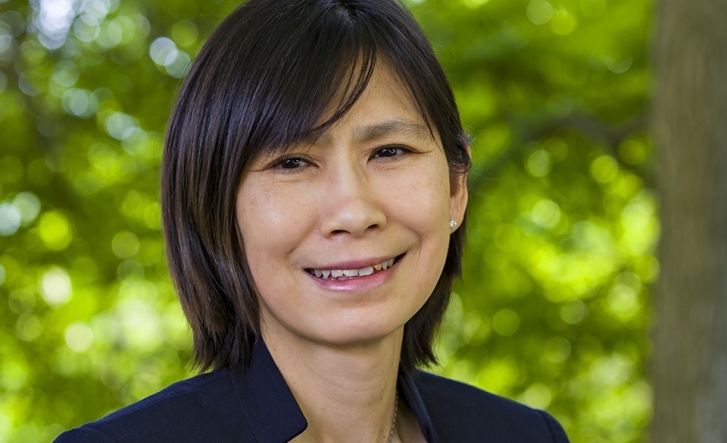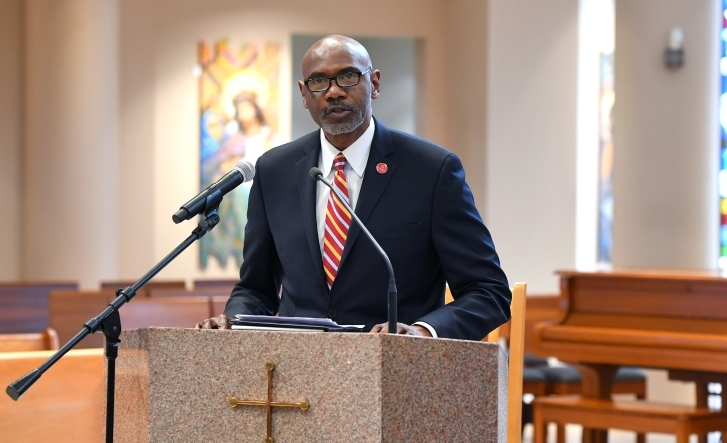Sandra Schamroth Abrams, Ph.D.

St. John’s Professor Helps Future Teachers Embrace Technology
Sandra Schamroth Abrams, Ph.D., Assistant Professor of Adolescent Education in The School of Education, on the Staten Island campus, firmly believes that students’ use of technology outside the classroom offers vital academic benefits. Whether students are gaming, texting or posting to social media sites, they are engaging in a form of literacy, Dr. Abrams observed.
A focus of her research has been the way students can hone the skills they develop through their use of technology and bring that expertise into the classroom. Many students, as well as educators, don’t necessarily see an overt connection between the two, Dr. Abrams noted.
“Many of my students have had very traditional school experiences,” she explained, adding that schools often can’t adapt as quickly as technology changes. Nonetheless, Abrams has worked with her students to explore the dynamic applications of technologies inside the classroom, noting that when tools, such as Smartboards, websites, and video games are used properly, “they can be incredible resources for meaningful learning.”
A New Frontier
Dr. Abrams hopes to guide her students (all future educators themselves) in navigating this emerging and ever-changing technological landscape so they can maximize the resources available to them.
To that end, she introduced a pilot class last spring entitled, “ New Media, Virtual Environments and 21st Century Learners,” stressing the idea that video games and other popular technology possess academic benefits. Her students not only explored and analyzed digital tools and virtual practices, but also they tutored adolescents from local middle and high schools, utilizing the same technologies.
Dr. Abrams received a great deal of positive feedback from her students, some of whom were initially skeptical about the educational benefits of the games and new approaches. “It was a really powerful semester. My students were able to chart both their own growth and that of their tutees.”
Because technology can be limiting and frustrating at times, Dr. Abrams stressed the benefits of applying critical thinking skills to digital problem solving: “We have to account for obstacles. It’s one thing to discuss them in the abstract – it’s another to implement strategic and resourceful planning.”
Seeking Answers
Dr. Abrams’ interest in digital literacy has paralleled its growth as an important 21st Century phenomenon. Originally a high school English teacher, she embraced technology as it evolved throughout the late ‘90s and early 2000s. “I made my own webpage for teaching grammar using now primitive technology,” she noted, but soon realized there wasn’t a great deal of research available about how emerging technology could help her students.
“What was out there wasn’t enough,” she explained. “I wanted to do research on my own, and that’s why I went back to graduate school for my Ph.D. The cyber revolution was altering students’ literacy practices outside school, and I recognized the need to harness the unique qualities of multimodal learning within the academic realm.”
As she delved deeper into new technology, Dr. Abrams paid close attention to the influence of video games in the lives of adolescents. As part of her dissertation, Dr. Abrams received a generous stipend to purchase game consoles and brought them into a public school to document students’ thinking during game play. “I was impressed to find how they developed vocabulary and content area knowledge as a result of gaming.” Abrams also relayed how gaming was a source for collaboration and critical analysis. In addition, contrary to critiques of the isolating effects of game play, Abrams found that games could offer students opportunities to develop global networks. “In one case, a student independently learned Croatian to be able to communicate with his international cadre of gamers in Eastern Europe.”
When Dr. Abrams joined the faculty of St. John’s in 2009, she was encouraged to continue her research and focus on 21st century classrooms. Abrams notes how fortunate she has been to work in the Teaching and Learning Labs on the Staten Island Campus. Through a grant from the Richmond County Savings Foundation, secured by Regina Mistretta, Ed.D., Associate Professor for the Department of Curriculum and Instruction, St. John’s University offers technologically advanced environments for future educators.
Within these classrooms, Abrams has been able to integrate technology instruction into all the courses that she teaches. “I believe in training our students to be dynamic 21st century educators. That includes learning how to conduct a session online, communicate in virtual spaces, and use technology inside the classroom to engage students and develop critical conversations. It’s incorporated into everything I do.”
Abrams added that, despite the advent of technology, universal pedagogical concepts and effective classroom practice continue to be validated; and while the foundations of educational training may not have changed, the tools and skills continue to evolve. “As educators, we need to think creatively and resourcefully to ensure that our students develop the flexibility, innovation, and judgment necessary to successfully implement and apply ever-changing technologies. These goals will ensure an educated citizenry capable of adjusting to the transformative digital and pedagogical landscapes and cultures inside and outside the academic world.”



